An Introduction to the English Civil War 1642-51
The fundamental origins of the Civil War lay in the friction between Crown and Parliament which had been developing since the previous century. It was brought to a head by economic, religious and political factors, and by the character of King Charles I himself.
His attempt to rule without calling a Parliament collapsed as a result of the Scots Wars of 1639 and 1640, followed by the Irish rebellion of 1641. Parliament set out to remove their opponents from power, imposed tighter controls on the Crown, and increase its own power. By the beginning of 1642 the two sides were on a collision course which led inevitable to war.
1642
The hopes which both sides had of quick victory were dashed by the indecisive battle of Edgehill (October 23rd), and the king’s failure to occupy London. He made his headquarters at Oxford, and the war spread across England and Wales, with the North, Wales and Cornwall being generally in Royalist hands, the South East held by Parliament, and the remainders of the country in dispute.
1643
The campaigns of this year saw the Royalist cause at the height of its success. In the North, the Royalist forces of the Earl of Newcastle, occupied most of the region apart from Hull and Manchester. In the South-West the Cornish Royalist Amy of Sir Ralph Hopton won a series of brilliant victories, though they failed to take Plymouth, and linked up with the King. Prince Rupert captured England’s second port, Bristol, but failed to take Gloucester in August. In what is often regarded as the decisive move of the First Civil War, the Earl of Essex relieved the town in September, and fought the King to a standstill at the First Battle of Newbury (September 20th). Though the Royalists ended the year with considerable territorial gains, they had failed to win a decisive victory, and Parliament, with greater materials resources, and now allied with Scotland, would have a increasingly overwhelming advantage.
1644
The decisive actions of the year took place in the North. In an attempt to counteract the Scottish army sent to assist Parliament in the North-East, the King had brought in English troops from Ireland, but the main contingent of these were defeated at Natwich (January 25th). A hard fought struggle for control of the North-East and Yorkshire ended with Price Rupert’s crushing defeat at Marston Moor (July 2nd), the largest battle of the war.
The Royalists however found some grounds for optimism in the increasing success of the Royalist rebellion in Scotland led by the Marquis of Montrose, and by the King’s Oxford Army in the south and South-West.
1645
In a bid for outright victory, Parliament formed the New Model Army, led by Sir Thomas Fairfax and Oliver Cromwell. This smashed the Oxford Army at Naseby (June 14th) and the Royalist Western Army at Langport (July 10th), and then began to mop up the Royalist garrisons.
Montrose was briefly master of Scotland during August, but was defeated at Philliphaugh in the following month, and his cause never recovered.
1646
The First Civil War came to an effective end with the surrender of the remaining Royalist field armies, and the flight of the King to the Scots, followed by the fall during the summer of his last major garrisons.
1647
Growing friction between the Army and Parliament, and between both and the Scots, was exploited by the King, who still hoped to avoid any compromise.
1648
The outbreak of the Second Civil War was signalled by a series of Royalist uprising in England and Wales, and a mutiny in part of the Navy. A Scottish army under the Duke of Hamilton invaded England in support of the King. The uncoordinated Royalist risings were suppressed, the Scots defeated by Cromwell in the Preston Campaign, and the remaining English Royalists crushed by Fairfax at Colchester.
1649
King Charles I was executed, and the Monarchy abolished in England and Wales, though not in Scotland. The Commonwealth was established, and its troops under Cromwell began the systematic suppression of the Irish Rebellion.
1650
Charles II took the Covenant in return for Scottish support. As he prepared to invade England, Cromwell launched a counter-invasion of Scotland. He defeated the Scots under David Lesley at Dunbar (September 3rd), but failed to complete the conquest before winter.
1651
Outmanoeuvred by Cromwell, Charles II invaded England (August 6th). He gained little English support, and, abandoning his march on London, established himself at Worcester to rest and recruit. A Royalist rising in Lancashire was defeated. On Sept
3rd Cromwell defeated Charles II at Worcester. The Kong escaped to the Continent. Apart from minor risings, the Civil Wars were over: Cromwell was Lord Protector until his death in 1658, when rising pro-Royalist sentiment led to Charles II's restoration in 1660.
The commanders
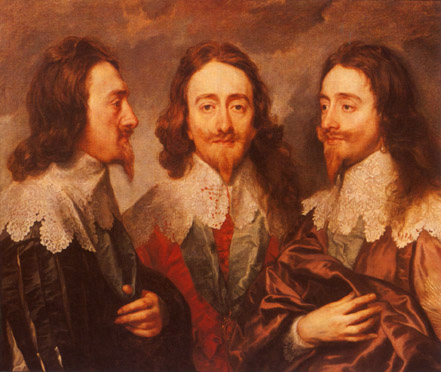
King Charles I (1606-49)
Charles’s unfortunate combination of weakness and stubbornness, both usually displayed in the wrong circumstances, were one of the major causes of the Civil War. He had had no real military experience prior to the outbreak of the Civil War, when he automatically became Captain-General (Commander-in-Chief) of the Royalists forces.
Charles displayed considerable personal courage, albeit of a passive kind but proved totally unable to reconcile of control the rivalries of his commanders, with disastrous effects for the Royalist cause. Though Charles is sometimes credited with devising the strategy behind the Oxford Army’s successful campaigns of 1644, there is no evidence to support this.
A prisoner during the Second Civil War, which sealed his fate, Charles faced his execution in 1649 with great bravery.
The Royalist commanders
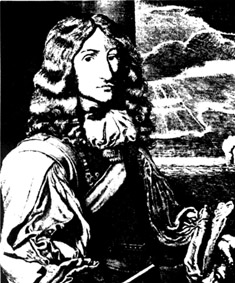 |
Prince Rupert, (1619-1682) |
|
Nephew of King Charles, Rupert had seen brief military service on the Continent before arriving in England and being appointed General of Horse. He proved an excellent leader of cavalry, particularly in raids and cut and thrust actions, and inspired his troopers. His arrogant and austere personality did not however endear the Prince to many of his colleagues, and he incurred powerful enemies. |
||
Though an able administrator, Rupert proved less successful in higher command, meeting with defeat at Marston Moor and Naseby. He lost his command in 1645, but later had an active naval career, and displayed other faces of his versatile personality as an engraver and inventor. |
||
Ralph, Lord Hopton (1598-1652) Originally an opponent of some aspects of the Royal policy, on he outbreak of Civil War Hopton rose to command the Royalist Western Army in the series of campaigns which conquered much of the South West for the King. He had mixed success in the latter part of the war, but following the dictates of his personal motto ‘I will strive to serve my Sovereign King’ led the remnants of the Western Army in their final actions of the war. |
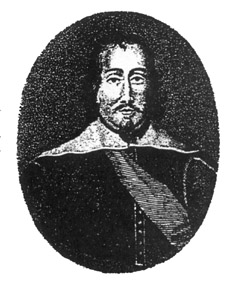 |
William Cavendish Earl of Newcastle, (1592-1676) It was said of Newcastle, by an officer who served under him, that he ‘had the misfortune to have somewhat of the poet in him’. This was a little unfair, for when Newcastle was appointed General of the Northern Counties, he was sensible enough to employ professional soldiers to run his army. However he was repeatedly to show that he lacked the ability to decide on an objective and stick to it, and this plus the regional priorities of his men, was to continually frustrate Newcastle’s efforts. His abrupt departure to the Continent after Marston Moor, destroyed any hopes of Royalist recovery in the North. |
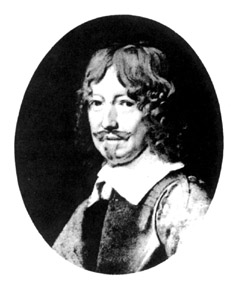 |
The Commanders
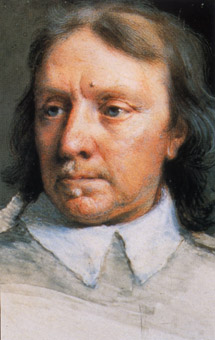 |
Oliver Cromwell (1598-1658) Cromwell had no military experience prior to the outbreak of the First Civil War, his importance as a soldier during which has been considerably exaggerated by posterity. He proved an adept pupil of the art of war and gained a growing reputation as a cavalry leader which earned him the position of second in command of the New Mode Army. His real claims to military greatness lie in his victories at Naseby, Preston, Dunbar and Worcester. |
The Parliamentarian Commanders
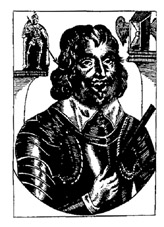 |
Robert Deveraux 3rd Earl of Essex (1591-1646) Second in command of the government forces in the last Scots War Essex was appointed as Captain-General of Parliament's forces on the outbreak of Civil War. Essex had great personal courage an was popular with hi troops, to whom he was know as 'Old Robin', but his strategic talent were limited. His greatest success was his Relief of Gloucester in 1643, which has been held to be the turning point of the war. |
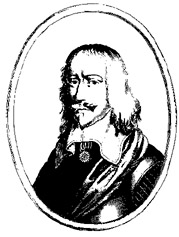 |
Sir William Waller (1598-1668) A personal friend of Ralph Hopton, Waller was fated to be his principal opponent in a close-fought duel which lasted almost a year. Waller had a number of notable successes to his credit, an was described by and opponent as ‘the best shifter and chooser of ground when he was not Master of the field that I ever saw’. But he was a poor disciplinarian, an though a skilful soldier he tended to be over-cautious. |
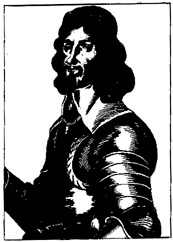 |
Tomas, 3rd Lord Fairfax, (1612-1671) Served as his father’s second-in-command in the North during the opening years of the war, an proved and excellent fighting soldier. Though his record as a general was patchy during his early career, Fairfax proved an outstanding commander of the New Model Army, particularly at Naseby and the campaigns in the West. During the Second Civil War, Fairfax broke the Royalist insurrection in the South East, but he grew increasingly uneasy at political developments, and retired from public life. |
The English Civil War 1642-51
The Soldiers
Dragoon Dragoons tended to fall uncomfortably between the categories of horse and foot. They were most usefully employed in scouting, raiding and skirmishing. Though at the beginning of the war complete regiments of dragoons were formed, the trend was to replace them by single troops attached to regiments of horse, or by detachments of mounted musketeers used for specific operations. Our dragoon will ideally be armed with a fire lock musket, shorter in the barrel than those employed by the foot. He carries his powder and shot in a leather bag rather than in a bandolier. |
The English Civil War 1642-51
The soldiers
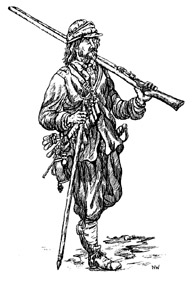 |
Musketeer This marching soldier is typical of the musketeers of the Royalist Oxford Army from 1643 onwards. He wears a montero cap and coat and breeches ideally in the Royalist Army all the same colour. The dress and equipment of a Parliamentarian musketeer would have been virtually identical; head gear on both sides varied – broad-brimmed felt hats and knitted Monmouth Caps, similar to those worn by sailors, were also common. Our soldier is armed with a matchlock musket, and rest for use when firing it. As the war progressed, muskets tended to become lighter and shorter and the rest was dispensed with. He wears a leather bandolier with a dozen or more wooden containers, each carrying sufficient coarse powder for a single round. At his hip can be seen a small pouch containing musket balls, and a flask containing fine powder for priming the musket and a small container for oil. Musketeers were also armed with a cheap sword, used mainly for chopping firewood! They found their clubbed muskets more effective weapons in hand-to-hand fighting. |
The English Civil War 1642-51
The soldiers
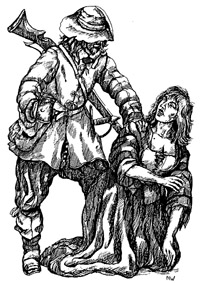 |
Dragoon Officer and Camp Follower The term camp follower can be applied to a wide range of women who accompanied the army. They could range from the legal wives of soldiers and officers, through sutleresses to the more dubious ‘leaguer ladies’ or whores, who were sometimes expelled from the armies. In practice it is doubtful how many wives actually accompanied their spouses in the hardships and hazards of campaign life in the relatively short-term and short-range operations in the British Isles and most of those who followed the soldiers were either engaged in various commercial enterprises or were Irish or Welsh who had accompanied their menfolk to the wars. Some of these were among the unfortunates massacred by the New Model at Naseby. |
The English Civil War 1642-51
The soldiers
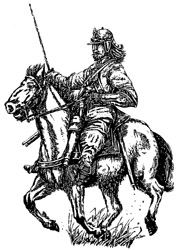 |
Trooper of Horse A fully equipped ‘harquebusier’, armed with sword, carbine and pair of pistols, wearing a buff coat and ‘pot’ helmet. The only equipped generally regarded as desirable which this soldier lacks are backs and breastplates. Though on the outbreak of war there was much variation in the dress and equipment of individual cavalrymen, by the end of the wars the horse of both sides were usually identically equipped, and distinguishable only by fields signs such as coloured sashes or armbands. |
The English Civil War 1642-51
The soldiers
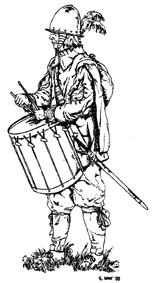 |
Drummer Each company of foot had two drummers on its establishment. Their duties included using their drumbeats to convey orders or signals during drill, battle, or on the march. Contrary to popular legend, they were normally grown men, not boys, as they were expected to carry necessary messages to the enemy, and act as spies in the process – hence the rough handling they sometimes received. They were dressed according to the tastes of their commanding officer, sometimes rather exotically. |
The English Civil War 1642-51
The soldiers
 |
Pikeman This soldier is equipped in the fashion regarded in 1642 as ideal. He wears a full set of Foot Armour, apart from the gorget protecting the neck, which has been replaced by a scarf. Full armour was not always available, and as the war went on, it became progressively less popular. The ‘tasset’ (or plates protecting the thighs) were first to be abandoned, and by the latter part of the period, the pikemen of the New Model Army wore no armour at all. Armour was normally only worn on the battlefield, being carried in waggons on the march. As well as the customary cheap and nasty sword, the pike was regarded as the standard weapon. In theory in might vary between 15ft and 18ft in length, with an average of 16ft. In practice, soldiers tended unofficially to shorten them, both for ease of use, and as a source of firewood, so an average length of 14ft was common. |
The English Civil War 1642-51
The soldiers
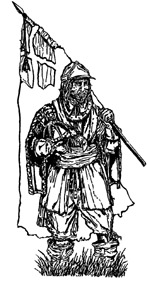 |
Ensign Every company of foot had its own ensign or flag, usually made of painted silk and about 6½ft square. A number of systems of symbols were in use by which individual companies within a regiment could be identified. The ground colour of a flag also related to specific values in military honour e.g. Red ‘Justice’, Black ‘’Wisdom and Sobriety’. Ensigns were junior officers entrusted with carrying the flag. As offices, they were dressed more richly than the rank and file. |
The war in the Midlands and Southern England
1642: The Midlands and the South, because of their strategic importance, containing as they did London and the Royalists’ temporary capital at Oxford, saw more fighting than any other part of the country, as well as most of the larger battles.
The King raised his Standard at Nottingham on August 22nd, and the opening campaign saw the battle of Edgehill in Warwickshire (October 22nd). Though tactically a draw, the engagement left King Charles free to continue his march on London, until he was halted at Turnham Green, on the outskirts of the capital. A temporary Royalist capital was established at Oxford, which was strongly fortified and further protected by a surrounding system of garrisons.
1643: During the next few years, he area surrounding Oxford was the focal point foe many military operations. The winter and spring saw the Royalists clearing their communications with South Wales by taking Marlborough and Cirencester, whilst Maurice defeated Sir William Waller at Ripple Field (April 13th) and recovered Hereford. However the somewhat lethargic Parliamentarian forces of the Earl of Essex struck back, taking Reading. However Essex, hindered by sickness and lack of pay for his troops, proved unable to capitalise on this success.
The spring and early summer saw the Royalist horse making wide-ranging raids into enemy territory, winning a notable victory at Charlgrove Field (June 10th)
On August 10th, the King laid siege to Gloucester, and its relief by the Earl of Essex in the following month has been held as the turning point of the war. Though cut off from London by the Royalist forces, Essex succeeded in battering his way through to safety at the First Battle of Newbury (September 20th)
1644: The year opened with the continuation of operation in Hampshire and Sussex, which had begun with a Royalist, advances late in 1643. This was foiled by a combination of inadequate resources and Waller’s skilful countermoves. After rverses at Alton (December 12th) and Arundel (January 6th), a more serious defeat at Cheriton (March 29th) forced the Royalists to adopt a defensive strategy in the South.
Rupert’s absence in the North, and the King’s abandonment of the Price’s proposed strategy further weakened the royalist position, and allowed Essex and Waller to launch a combined operation against Oxford. Though he evaded the trip, King Charles was saved more by dissension between Parliament’s generals, which resulted in Essex heading off into the West of England to relieve Lyme. This enabled Charles to turn on Waller, and inflict a crippling reverse on him at Cropredy Bridge (June 29th).
Returning in the autumn from his victory at Lostwithiel, King Charles, relieved Basing, Banbury and Donnington, whilst, largely because of the incompetence and lack of co-operation of their commanders, the combined Parliamentarian armies failed in the Second Battle of Newbury (October 27th) to destroy the much smaller Royalist army.
1645: The campaigning season opened with the Royalist armies already encountering increasing difficulties, typified by Cromwell’s effective raid around Oxford in April/May, and dissension among the Royalist commanders. Parliament’s New Model Army took the field, and inflicted a decisive defeat on the Royalist remaining Royalist hopes.
The remainder of the war in the area basically consisted of reducing the numerous Royalist garrisons. A last Royalist field army was forced to surrender at Stow on the Wold (March 21st 1646). The surrender of Oxford (June 24th ) effectively ended the war in the area.
The Second Civil War
In mid-May 1648 there was a full-scale rising in Kent by Royalists and disaffected Parliamentaians led by the Earl of Norwich. They were defeated by Fairfax at Maidstone (June 1st), and having failed to enter London, Norwich withdrew to Colchester where they linked up with local Royalists under Sir Charles Lucas. They held out against Fairfax until August 28th, when news of the Scottish defeat at Preston made further resistance pointless. In a controversial action, Fairfax had Lucas and two their leaders shot after the surrender.
The war in Scotland
1643: Though the Scots had been involved in fighting with English forces during the Bishop’s Wars of 1639 and 1640, they did not enter the Civil War until September 1643, when Scotland became allied with Parliament under the terms of the Solemn League and Covenant, and in January 1644 an army under the Earl of Leven invaded England.
1644: In August James Graham, Marquis of Montrose, crossed into Scotland to raise a rebellion in the King’s name with the aid of 2,000 Irish troops under Alasdair McColla. Montrose proved to be a master of guerilla warfare, and with the spasmodic support of varying numbers of Highlanders and other Scottish Royalists, won a remarkable series of victories beginning with Tippermuir (September 1st) and followed by Aberdeen (September 13th). During the winter he swept into Campbell territory in the Highlands, defeating Aryll’s army at Inverlochy (February 2nd). This defeat led to the return o increasing number of Scottish troops from England, and the hamstring of Scottish operations there.
1645: As Montroses’s successes continued, there seemed a growing possibility that he might conquer Scotland and march south to assist the King. But despite victories at Auldearn (May 4th), Alford (July 2nd) and Kilsyth (August 15th) Montrose proved unable to consolidate hi successes, and after he and part of his army were defeated Philliphaugh (September 13th), the Royalists compaign in Scotland collapsed.
1648: The Scottish supportes of King Charles, known as the ‘Engagers’ and led by the Duke of Hamilton, invaded England, but were defeated in the Preston Campaign. This reverse led to the return of the Covenanting regime in Scotland, but the situation there remained highly unsettled.
1650: In March, Montrose launched an invasion of Scotland in the name of King Charles II. He was defeated at Carbisdale (April 27th) captured, and executed. In June, having taken the Covenant in order to obtain Scottish support, King Charles II arrived. Seeing war to be imminent, the English government struck first, and Cromwell crossed the border on July 22nd.
David Lesley’s Scottish army, superior in numbers but inexperienced, engaged Cromwell in indecisive fighting around Musselburgh, until on September 3rd Cromwell won at Dunbar perhaps the greatest victory of his career.
This did not end the war; Cromwell occupied Edinburgh, but Charles was now able to unite both Covenanters and Royalists against the invaders.
1651: A lull resulting from Cromwell’s illness and Lesile’s recruting efforts lasted until June. On July 20th the Commonwealth general John Lambert won a victory at Inverkeithing which caused Charles and Lesley to launch a desperate invasion of England which endedin defeat at Worcester (September 3rd). It was left to General George Monck to complete the occupation of Scotland.
Aftermath: Unrest continued from some time, and included a major Highland Rising in 1653 led by the Earl of Glencairn, but English control of Scotland was not seriously threatened during the remainder of the Commonwealth and Protectorate.
James Graham, 1st Marquis of Montrose,
1612-1650
Montrose began his career as a support of the Covenant, but was alienated by what he was as the excess of the Scottish opponents of the King. Montrose’s military ability has sometimes been exaggerated but he showed rare flair in for a time banding together a number of disparate opponents of the Covenanting regime. He was captured and executed after the failure of his expedition of 1650.
The War in the West Country
1642: In August, the small Royalist forces in Somerset collapsed before superior numbers, and one of their commanders, Sir Ralph Hopton headed with a few horse for Cornwall. His arrival swung the balance in that county in favour of the Kings cause, and Hopton began raising the force which was to win fame as the Cornish-Royalist Army. Hopton's first invasion of Devon in November - December 1642 ended with failure.
1643: A parliamentarian counter-invasion of Cornwall was defeated at Braddock Down (January 18th), though a follow-up Royalist attempt toatake Plymouth failed. In April Hopton won an engagement against James CHudleigh at Launceston (April 23rd) but was defeated by him two days later aat Sorton Down. Learning from Hopton's papers captured there that Hopton was under orders to march into Somerset to link up with Prince Maurice, Parliament's General in the West, the Earl of Stamford, launched a full-scale invasion of Cornwall in order to pre-empt the Royalist plan. The decisive action was fought at Stratton, (May 16th) when Hopton's Cornish foot stormed Stamford's hilltop position and routed him.
Lansdown to Bristol: Hopton linked up with Maurice at Chard on June 6th, and after manouvering against the Parliamentarian Western Association forces, now commanded by the capable Sir William Waller, Hopton's old friendm attacked Waller's strong defensive position on Lansdown Hill near Bath (July 5th). In a ferocious action, the Royalists won a narrow victory, but the Cornishmens most capable leader, Sir Bevil Grenville, was mortally wounded at the head of his pikemen, and Hopton seriously injured in a powder explosion.
The dispirited Royalists took refuge in Devizes, sending Maurice and the horse to Oxford for help. Hopton was under siege by Waller when, on July 13th, a force of Royalists horse under Lord Wilmot appeared on Roundway Down, and, in one of the most complete Royalist victories of the war, smashed Waller's army.
Left for the moment with free hands in the West, the Royalists, led by Prince Rupert, stormed Bristol (July 26th) in a costly operation which cost the Cornish some of their best officers, and from which they never fully recovered.
Consolidation: A new Western Army under Maurice's command, and including the remnants of the Cornish, was sent to 'mop up' in the West. They took Exeter (October 4th), but, hindered by strong defences, Parliament's command of the sea, and Maurice's ill-health failed once more to take Plymouth. The other principal remaining Parliamentarian garrisons were Taunton and Lyme. Maurice switched his attention to the latter in March, but again became bogged down.
1644: In June Parliament's principal army, led by the Earl of Essex, relieved Lyme, and then misguidedly marched on West to relieve Plymouth, and still more foolishly, to invade Cornwall. Essex was trapped near Lostwithiel by the combined armies of King Charles, Price Maurice and Sir Richard Grenville. His cavalry escaped by land, and himself by sea, but all of Essex's foot were forced to surrender (September 3rd).
1645: The remainder of 1644 and the first half of 1645 saw deadlock in the West. The Parliamentarian garrisons of Lyme, Plymouth and Taunton continued to hold out, the latter two under varying degrees of attack from the Royalist forces of Sir Richard Grenville and Lord George Goring, under the nominal leadership of the Prince of Wales.
1646: In January, Hopton was restored to thankless command of the disintergrating Royalist army. His defeat at Torrington (February 17th) ended all Royalist hopes, and Hopton surrendered to Fairfax at Truro (March 12th) Exeter fell on April 9th. The surrender of Pendennis Castle (August 19th) ended Royalist resistance in the West.
Aftermath: Heavily policed by the Parliamentarian forces, the West played little part in events of later years. A last brief flurry occurred in 1655, with the supression in Wiltshire of Penruddock's Rising.
Main Catalogue Search Page
This search engine will allow you to find books based relevent to the keywords you enter above.
Enclosing your search terms in " (quote marks) means that this phrase will be searched for literally (i.e. "Flames of War" will only find books with the phrase Flames of war present).
By placing a plus or minus ( + / - ) in front of a keyword, you can force the search to either include or filter out certain keywords
(ie. "+WWII -German" would search for all World War II books that are not about Germans).
Shopping Cart














